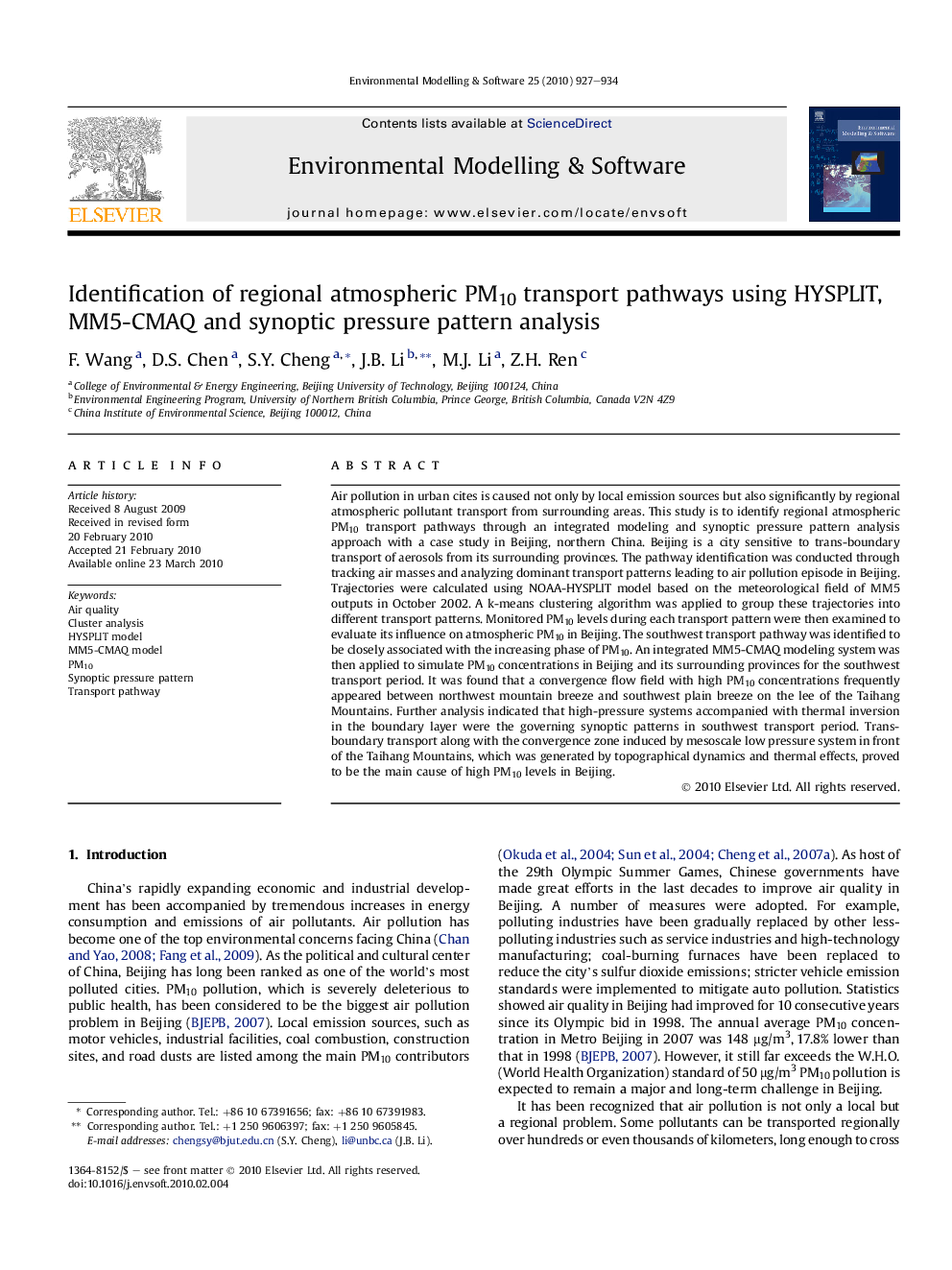| Article ID | Journal | Published Year | Pages | File Type |
|---|---|---|---|---|
| 569919 | Environmental Modelling & Software | 2010 | 8 Pages |
Air pollution in urban cites is caused not only by local emission sources but also significantly by regional atmospheric pollutant transport from surrounding areas. This study is to identify regional atmospheric PM10 transport pathways through an integrated modeling and synoptic pressure pattern analysis approach with a case study in Beijing, northern China. Beijing is a city sensitive to trans-boundary transport of aerosols from its surrounding provinces. The pathway identification was conducted through tracking air masses and analyzing dominant transport patterns leading to air pollution episode in Beijing. Trajectories were calculated using NOAA-HYSPLIT model based on the meteorological field of MM5 outputs in October 2002. A k-means clustering algorithm was applied to group these trajectories into different transport patterns. Monitored PM10 levels during each transport pattern were then examined to evaluate its influence on atmospheric PM10 in Beijing. The southwest transport pathway was identified to be closely associated with the increasing phase of PM10. An integrated MM5-CMAQ modeling system was then applied to simulate PM10 concentrations in Beijing and its surrounding provinces for the southwest transport period. It was found that a convergence flow field with high PM10 concentrations frequently appeared between northwest mountain breeze and southwest plain breeze on the lee of the Taihang Mountains. Further analysis indicated that high-pressure systems accompanied with thermal inversion in the boundary layer were the governing synoptic patterns in southwest transport period. Trans-boundary transport along with the convergence zone induced by mesoscale low pressure system in front of the Taihang Mountains, which was generated by topographical dynamics and thermal effects, proved to be the main cause of high PM10 levels in Beijing.
